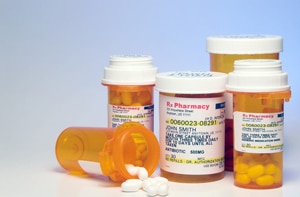
May 27, 2019
Keeping Track Of Your Drugs And Their Proper Dosing
By Michael D. Shaw
According to research published in the Mayo Clinic Proceedings in 2013, 68.1 percent of Americans are on at least one prescription drug, and 51.6 percent take two. 21.2 percent take five or more. It is estimated that in 2019, 4.25 billion retail prescriptions will be filled throughout the United States. The most commonly prescribed drug groups are penicillins and beta-lactam antimicrobials (17%); antidepressants (13%); opioid analgesics(12%), antilipemic agents (11%); and vaccines/toxoids (11%).
As to age demographics, people 65 and older make up 13 percent of the U.S. population, but account for 34 percent of all prescription medication use. [These figures are from 2010.] Given this level of medication, and the greater incidence of disease in this demographic, there is more possibility of problems, ranging from falls to adverse reactions to multiple meds.
There are also the matters of…
- Taking too much of a drug
- Confusing medications with one another
- Food and drug interactions
- Wrong route of administration
Of course, these issues can apply to prescription drug users of any age. Fortunately, tools are available to help you keep track of meds and dosage:
1. Here is a simple worksheet from the NIH.
2. Good guy Jon Wittwer of Vertex 42 provides this free Medication List template. Vertex 42 offers many other health-related templates, as well.
3. AppGrooves rates the Ten Best Medication Tracking Apps, for both Android and Apple. They all look solid, more so the top-rated ones.
4. What if you miss a dose? In general, it is a bad idea to “double-up” the next time around. Here are more tips.
5. Most large pharmacy chains have automated the refill and renewal processes. In many cases, they will contact your doctor on your behalf. Sure, their main motivation is more sales, but it is a win-win situation, because it frees you up from the hassle of calling your doctor for that renewal.
If you are on multiple meds, make sure your doctor is aware of everything you take. Also, make note of side effects. A rule of thumb here is to not let the massive lists of side effects for every drug influence your thinking, as much as the actual feelings you are experiencing. Did these effects start when you began to take the drug or when the dose was increased?
For example, some patients experience muscle pain with statins. Another example is shortness of breath that may come on with Metoprolol. In certain cases, the side effects may be severe enough to merit discontinuing the drug. It is important to consult with your doctor before you just stop taking a drug.
Bear in mind that you may have to taper off the drug, and the side effect may not disappear as quickly as you would like.
Finally, there is the matter of prescription drug abuse. We covered this subject earlier. This time, we’ll assume that you–the prescribed patient–are not abusing your meds, so we will focus on keeping your medications secure, and away from “interested” friends and family.
The Partnership for Drug-Free Kids advises these steps:
- Monitor your meds. Keep track of the number of pills in each container.
- Secure those drugs. Locking them up is definitely an option.
- Dispose of expired or unused meds.
As to the security side, I was recently informed of a brand-new product that calls itself the world’s smallest on-the-go security system. That product is Mimic Go. We’re talking GPS tracking of virtually any object, and circuitry that features global internet connectivity with LTE-M and eSIM. The unit supplies mobile notifications and an alarm siren if your meds or anything else you secure is moved. Here’s an informative video on the product.
Considering the health benefits of today’s prescription drugs, as well as their potential dangers, we owe it to ourselves and our families to practice good stewardship with all medications.
